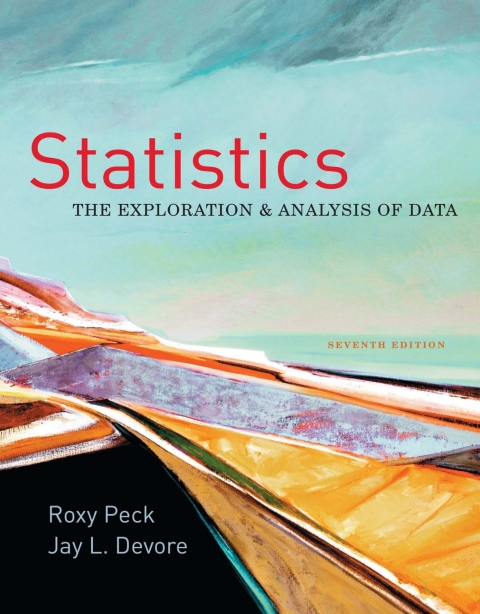The following figure appeared in the paper EDTA-Extractable Copper, Zinc, and Manganese in oils of the Canterbury
Question:
The following figure appeared in the paper
“EDTA-Extractable Copper, Zinc, and Manganese in oils of the Canterbury Plains” (New Zealand Journal of Agricultural Research [1984]: 207–217): A large number of topsoil samples were analyzed for manganese (Mn), zinc (Zn), and copper (Cu), and the resulting data were summarized using histograms. The investigators transformed each data set using logarithms in an effort to obtain more symmetric distributions of values. Do you think the transformations were successful? Explain.
1. Do you think that any of the three students made up the x values shown in their dotplot? If so, which ones, and what about the dotplot makes you think the student did not actually do the coin flipping?
2. Working as a group, each student in your class should flip a coin 30 times and note the number of heads in the 30 tosses. If there are fewer than 50 students in the class, each student should repeat this process until there are a total of at least 50 observations of x 5 number of heads in 30 flips. Using the data from the entire class, construct a dotplot of the x values.
3. After looking at the dotplot in Step 2 that resulted from actually flipping a coin 30 times and observing number of heads, reconsider your answers in Step 1.
For each of the three students, explain why you now think that he or she did or did not actually do the coin flipping.
1. Working in a group or as a class, discuss the folly of the above statement!
2. Suppose the following argument is made for threeegg quiches rather than four-egg quiches: Let x 5 number of eggs that carry Salmonella. Then p(0) 5 P(x 5 0) 5 (.75)3 5 .422 or three-egg quiches and p(0) 5 P(x 5 0) 5 (.75)4 5 .316 for four-egg quiches. What assumption must be made to justify these probability calculations? Do you think this is reasonable or not? Explain.
3. Suppose that a carton of one dozen eggs does happen to have exactly three eggs that carry Salmonella and that the manager does as he proposes: selects three eggs at random and throws them out, then uses the remaining nine eggs in four-egg quiches. Let x 5 number of eggs that carry Salmonella among four eggs selected at random from the remaining nine.
Working with a partner, conduct a simulation to approximate the distribution of x by carrying out the following sequence of steps:
a. Take 12 identical slips of paper and write “Good” on nine of them and “Bad” on the re maining three. Place the slips of paper in a paper bag or some other container.
b. Mix the slips and then select three at random and remove them from the bag.
c. Mix the remaining slips and select four “eggs”
from the bag.
d. Note the number of bad eggs among the four selected. (This is an observed x value.)
e. Replace all slips, so that the bag now contains all 12 “eggs.”
f. Repeat Steps (b)–
(d) at least 10 times, each time recording the observed x value.
4. Combine the observations from your group with those from the other groups. Use the resulting data to approximate the distribution of x. Comment on the resulting distribution in the context of the risk of Salmonella exposure if the manager’s proposed procedure is used.
Step by Step Answer:

Statistics The Exploration And Analysis Of Data
ISBN: 9781133171744
007th Edition
Authors: Roxy Peck, Ay L Devore






